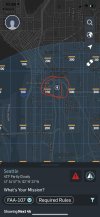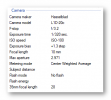They can restrict takeoff and landing on their property, but have no control of overflight. They are in Class G airspace.I was doing some research regarding flying on UCSF property, and they claim to be able to restrict flight well outside their property:
Proposed UAS/drone operations outside of the 1-mile radius are allowed – as directed by FAA governance -as long as the drone operator is cognizant and avoids helicopter flight.
Within the 1-mile radius UAS/drone operations must be under 156 feet mean sea level (MSL) in relation to topography (140 feet AGL at actual helideck height).
Operations/flights above 140 AGL at Helideck/156 MSL within the 1-mile radius is unacceptable due to the safety risks placed on helicopter flight.
U of M Ann Arbor has the same rules like they own the airspace. TFR’s do go into effect when Michigan Stadium is in use for games and other events. Mostly so the TV networks have exclusive video rights.
Last edited:














